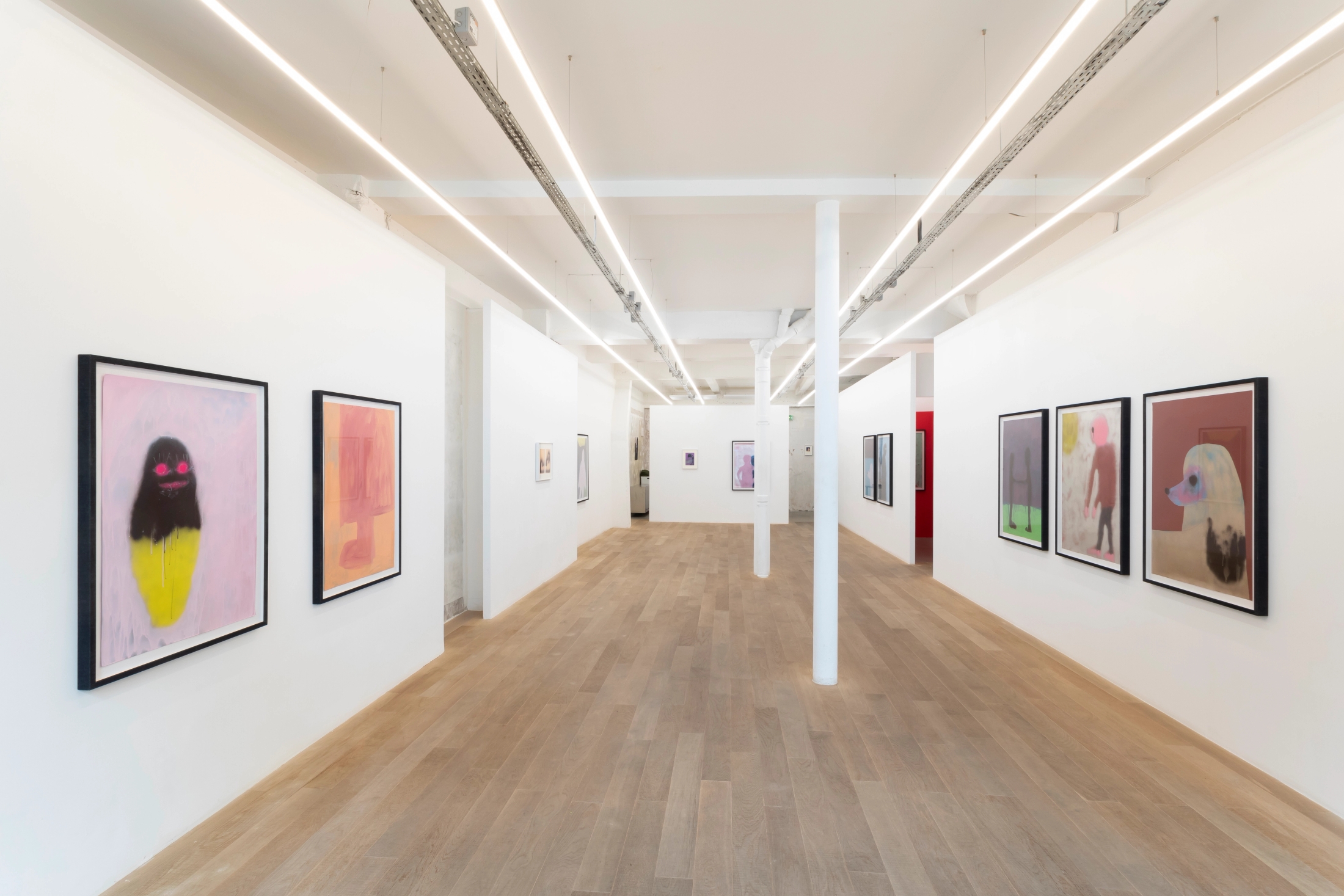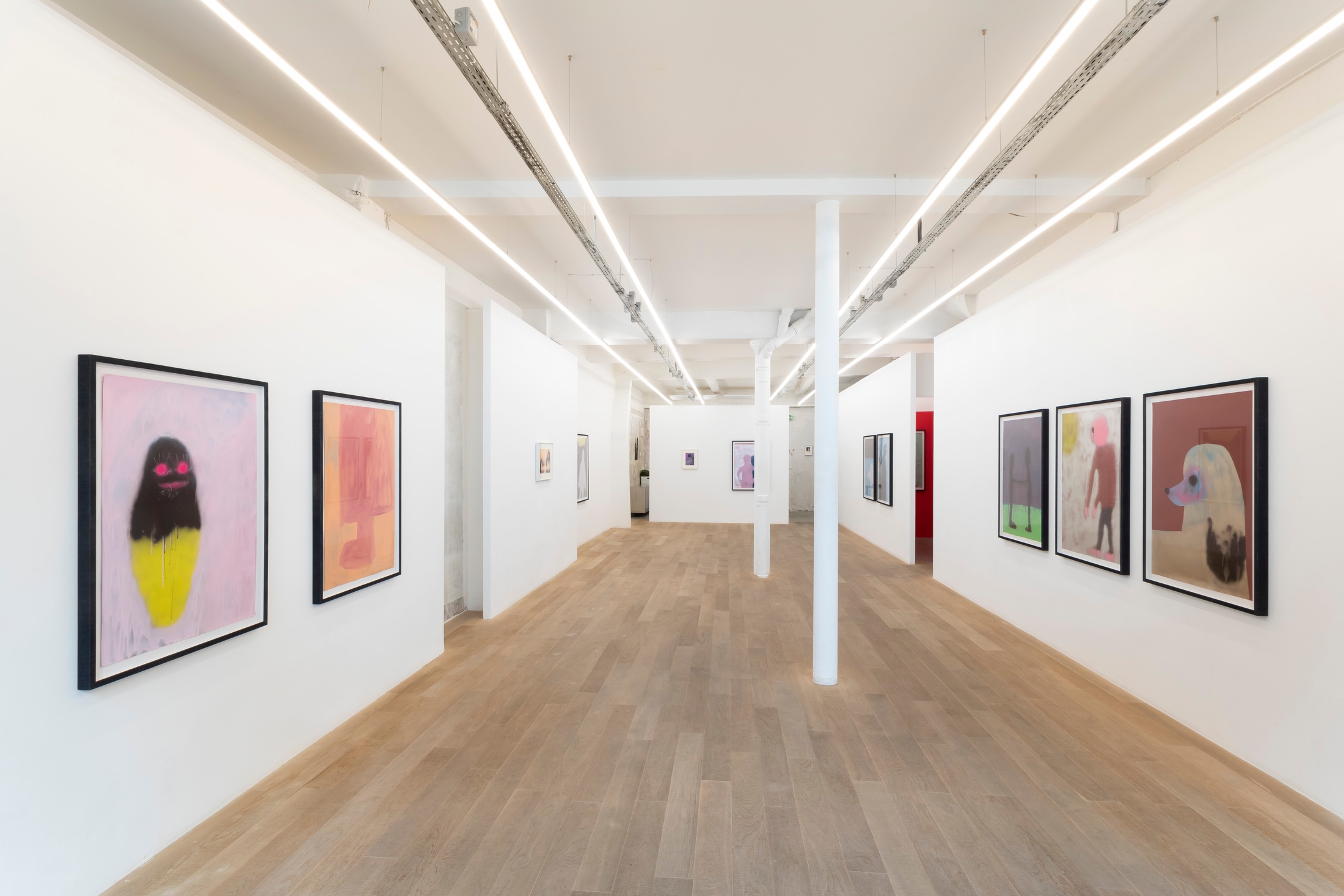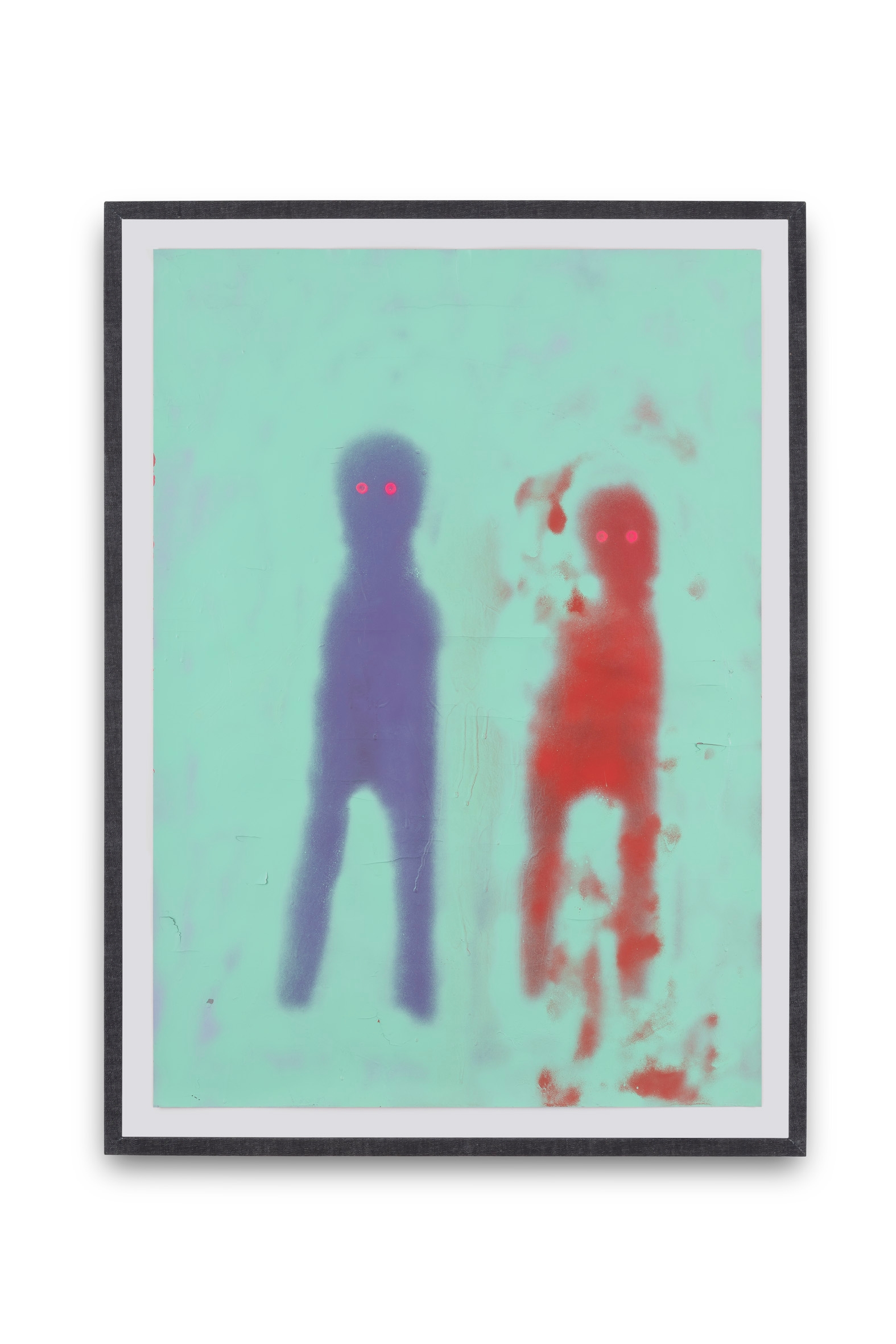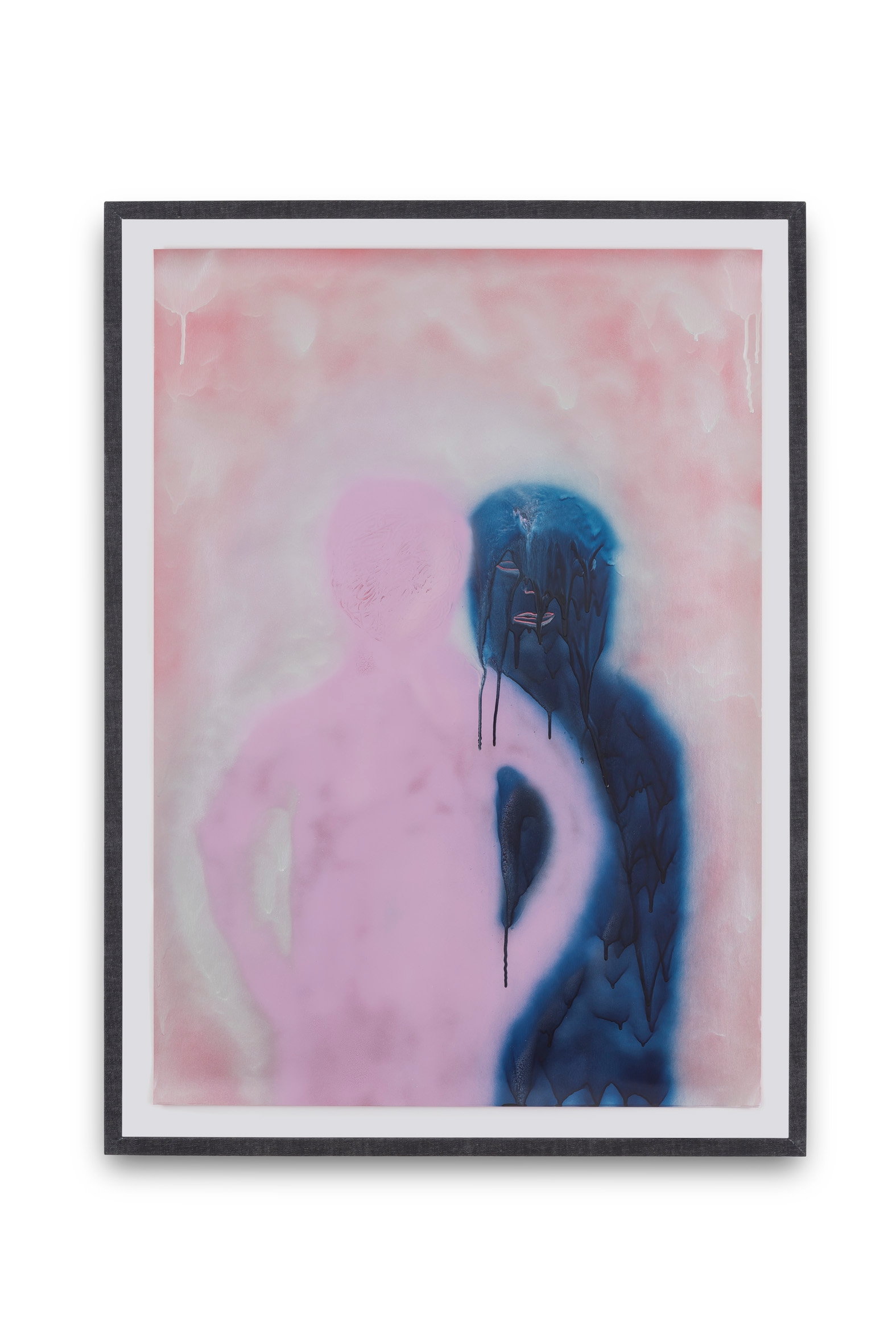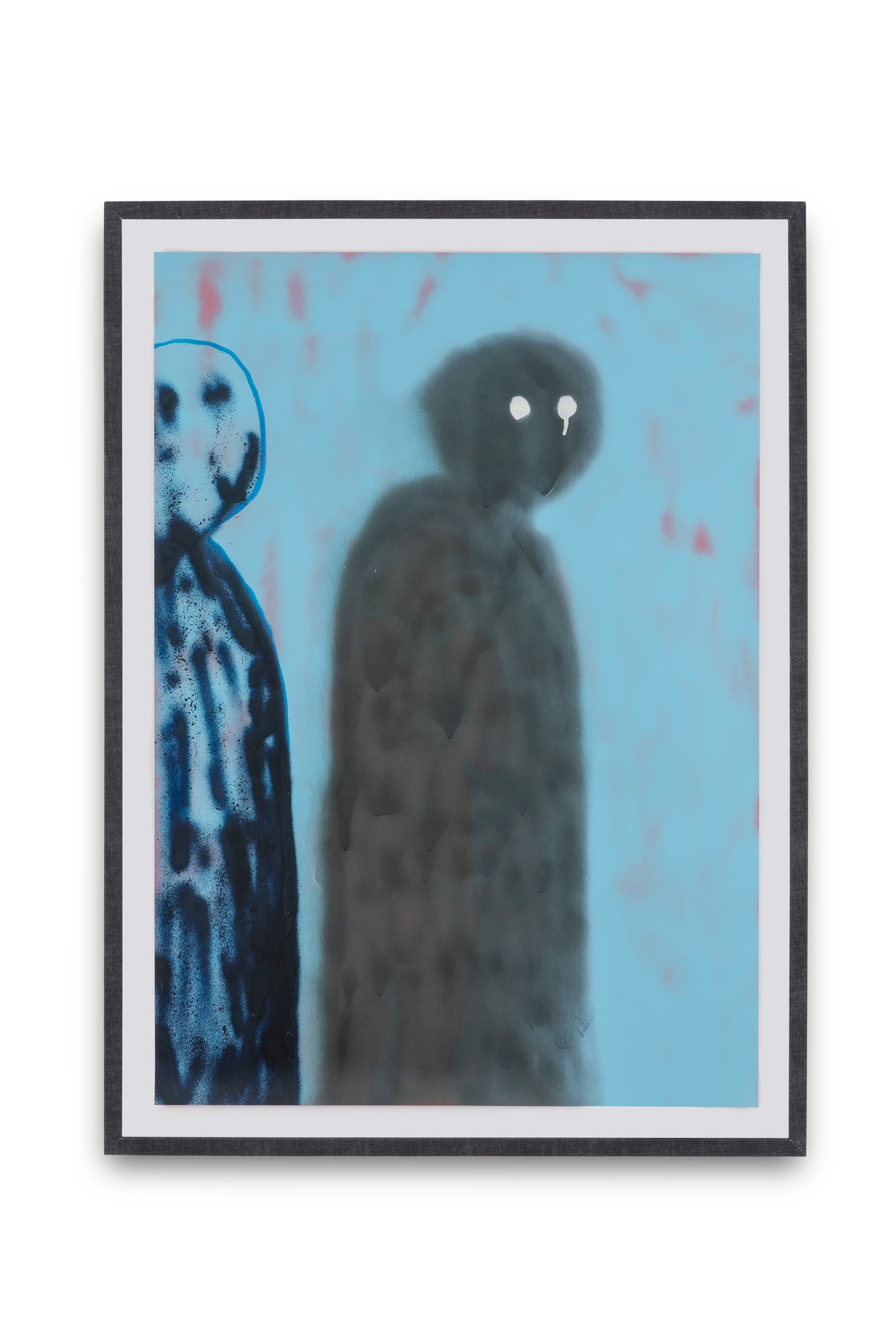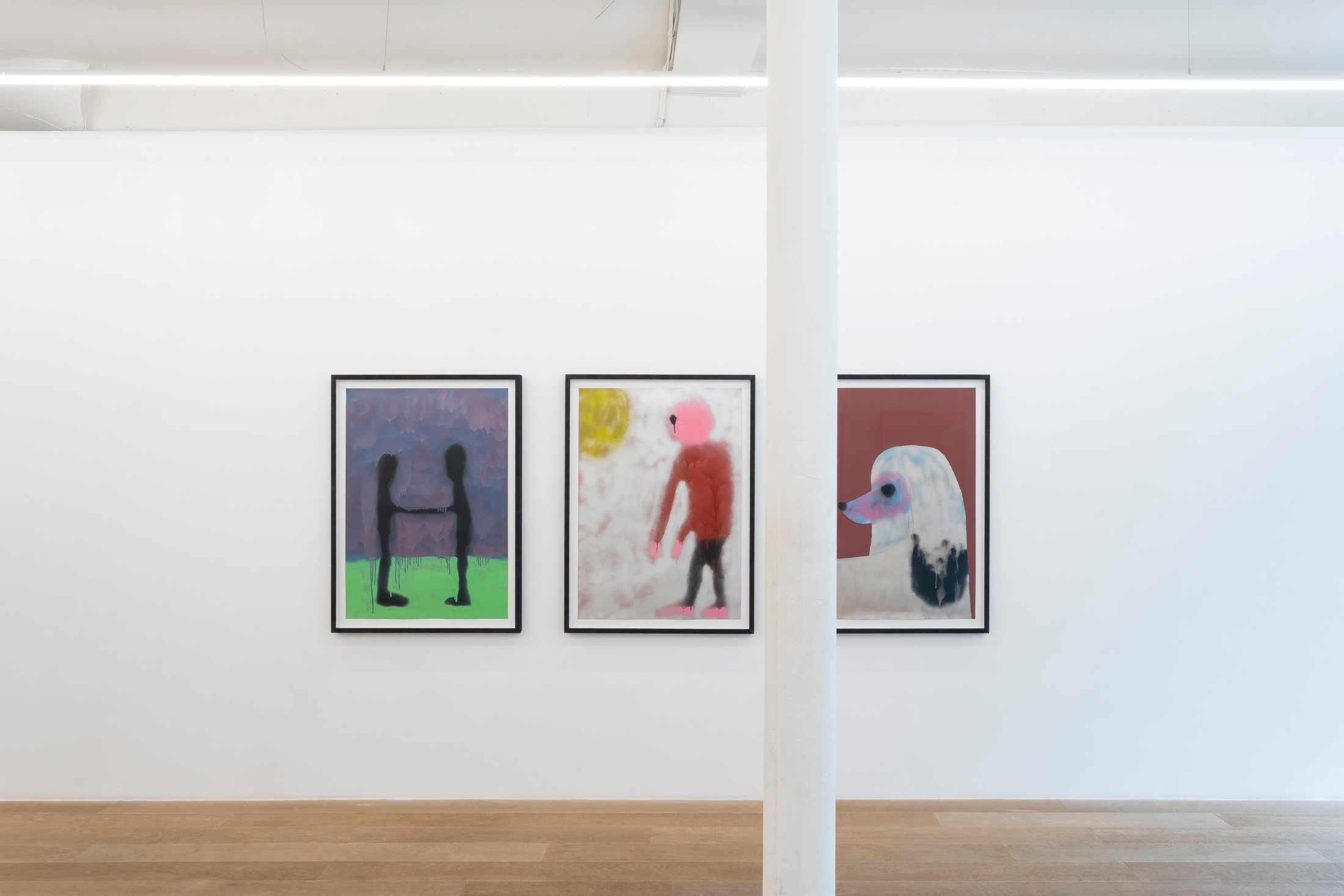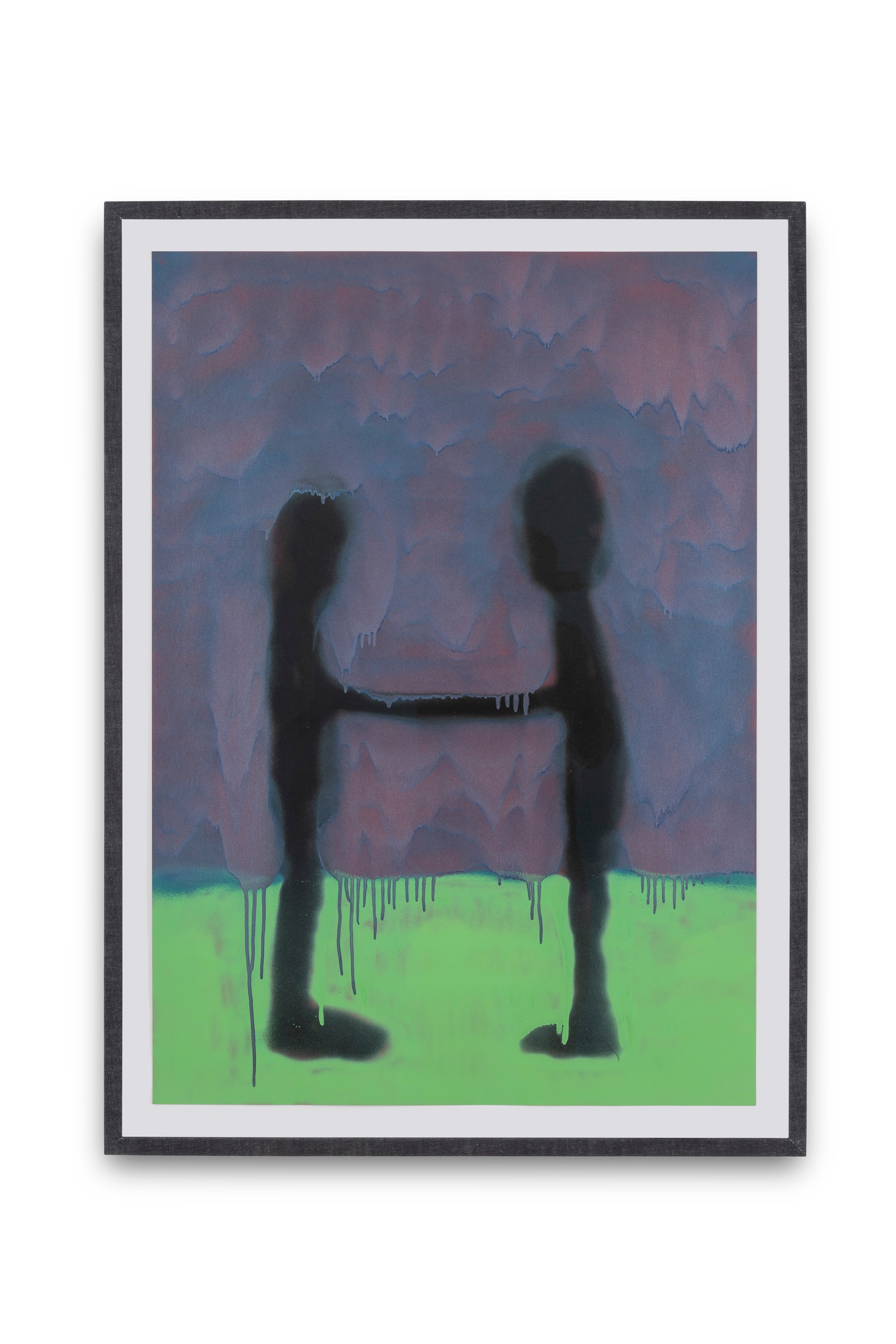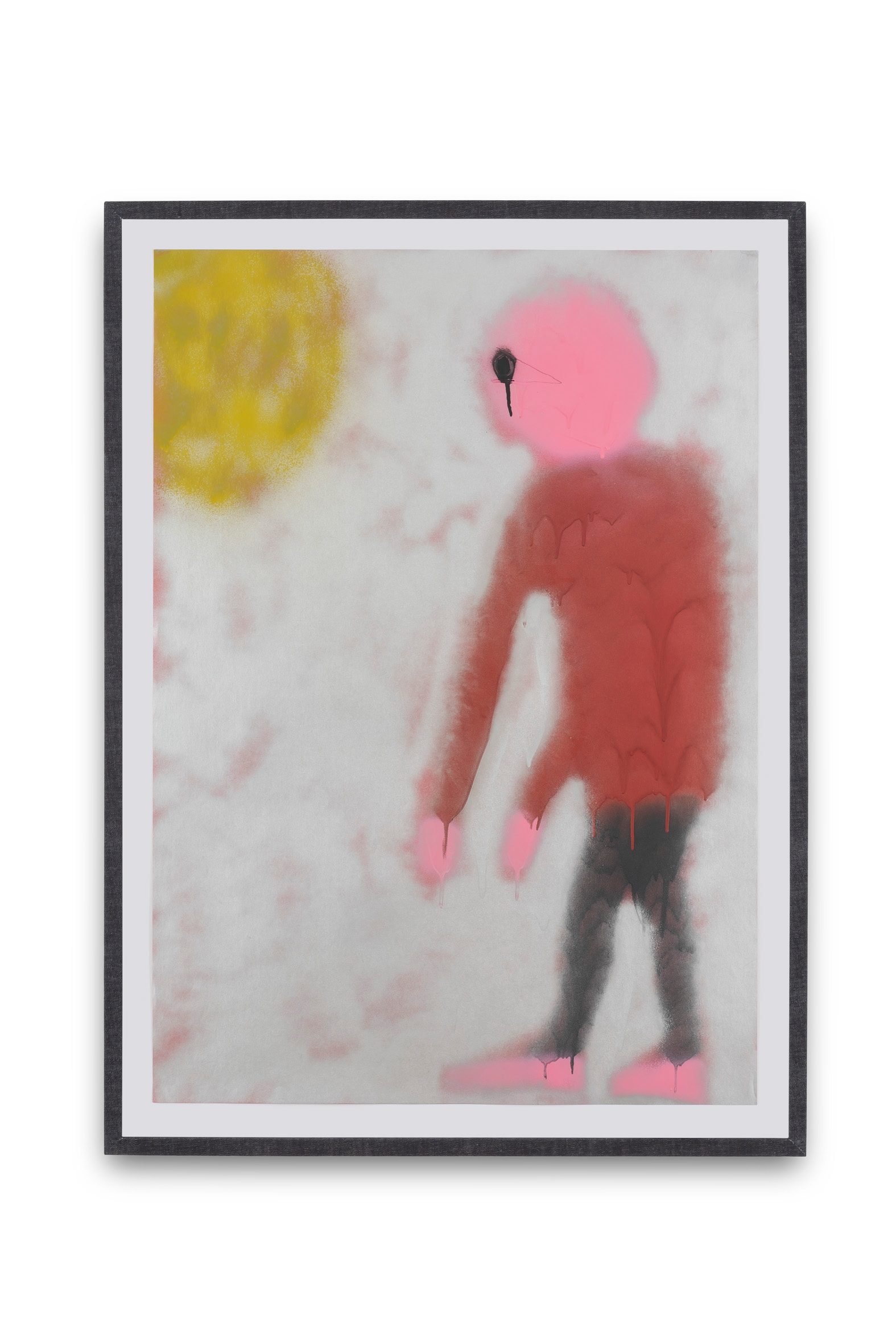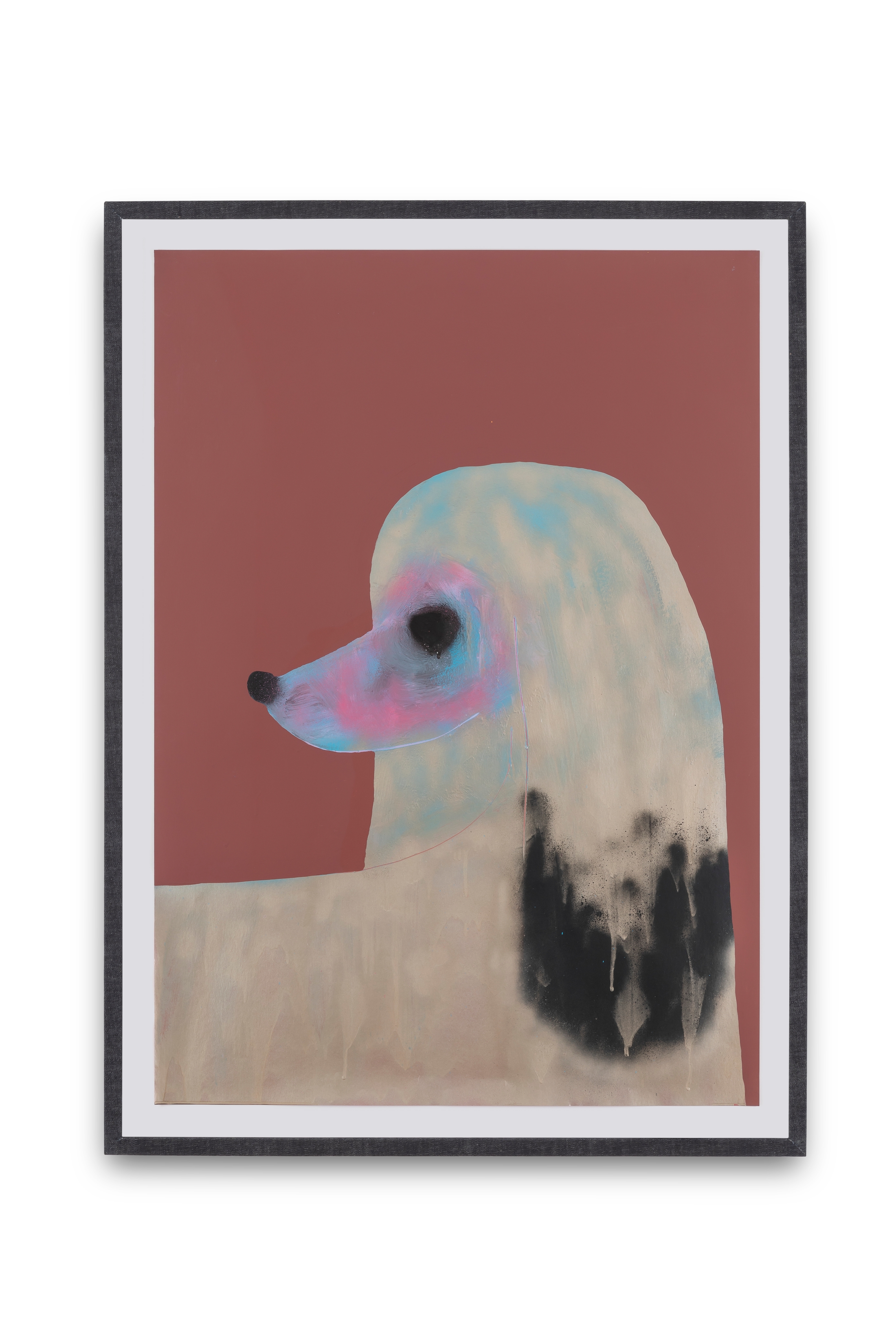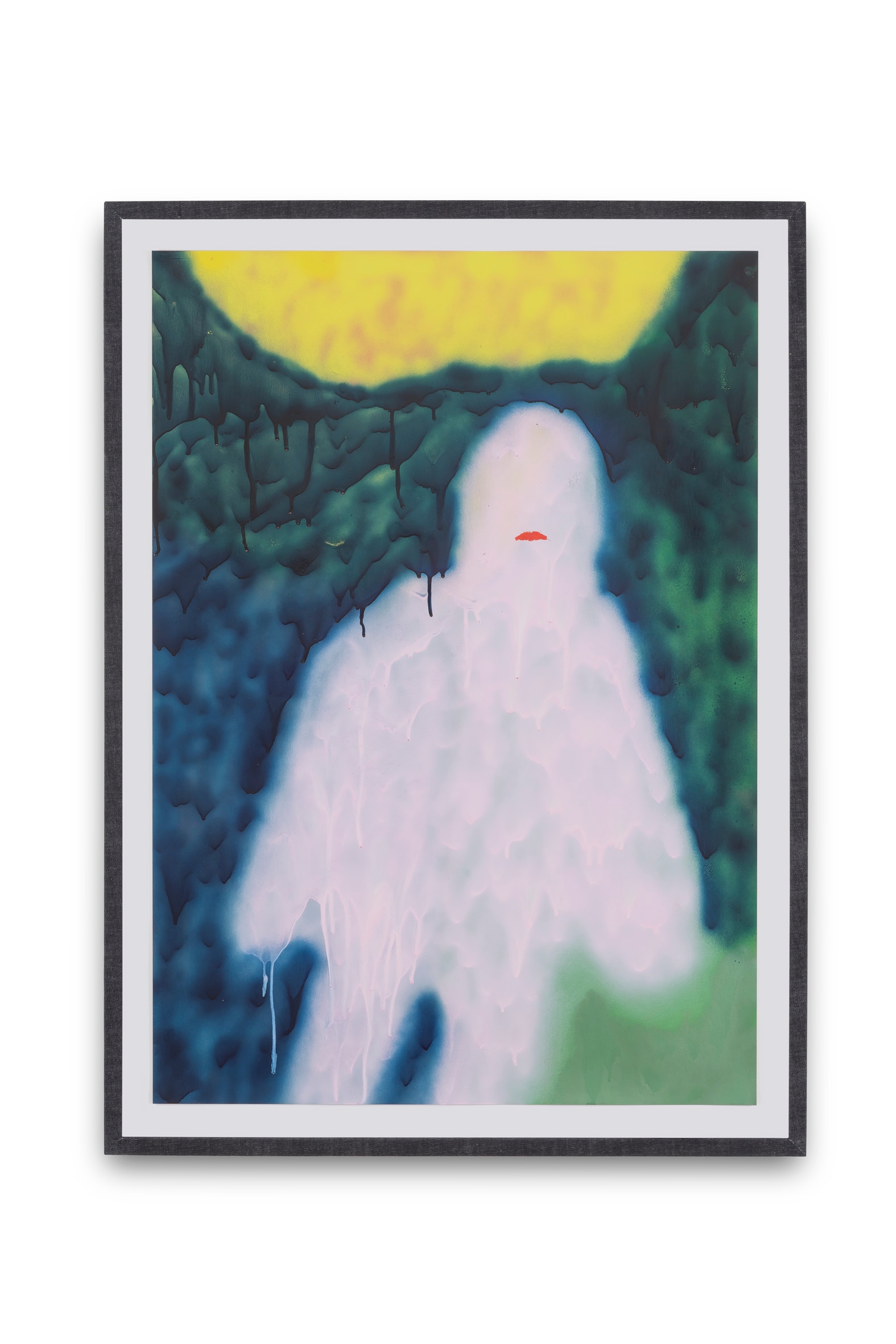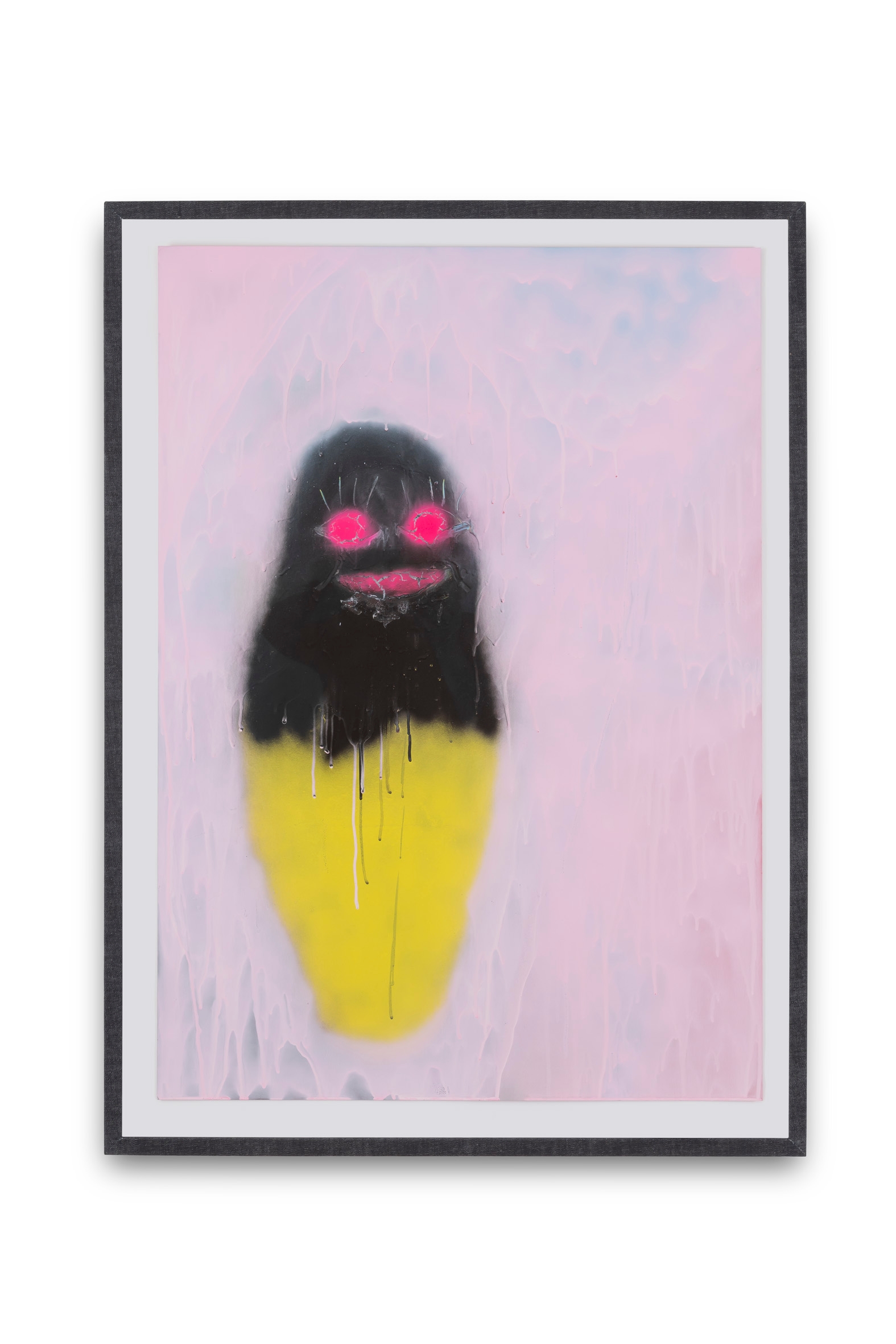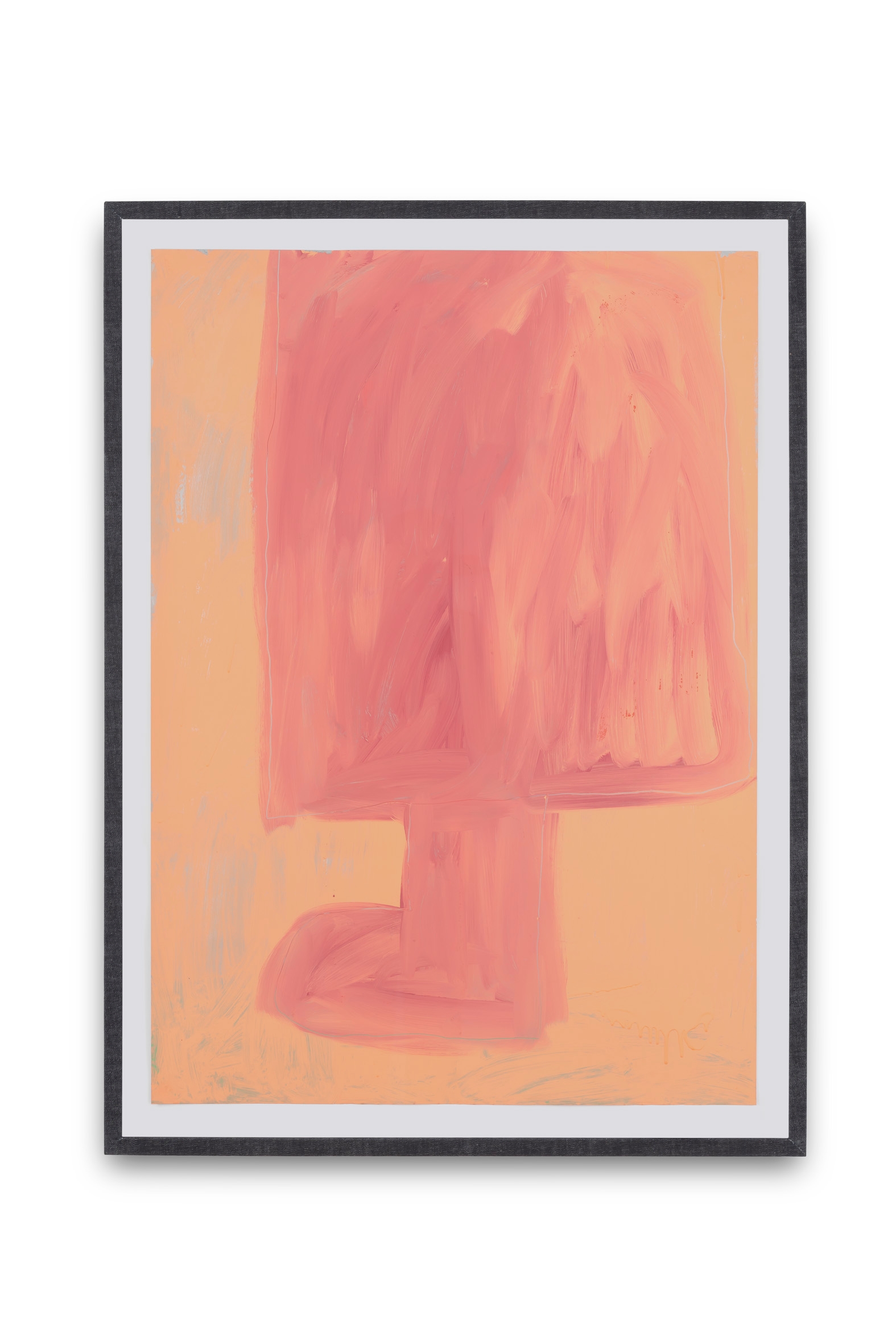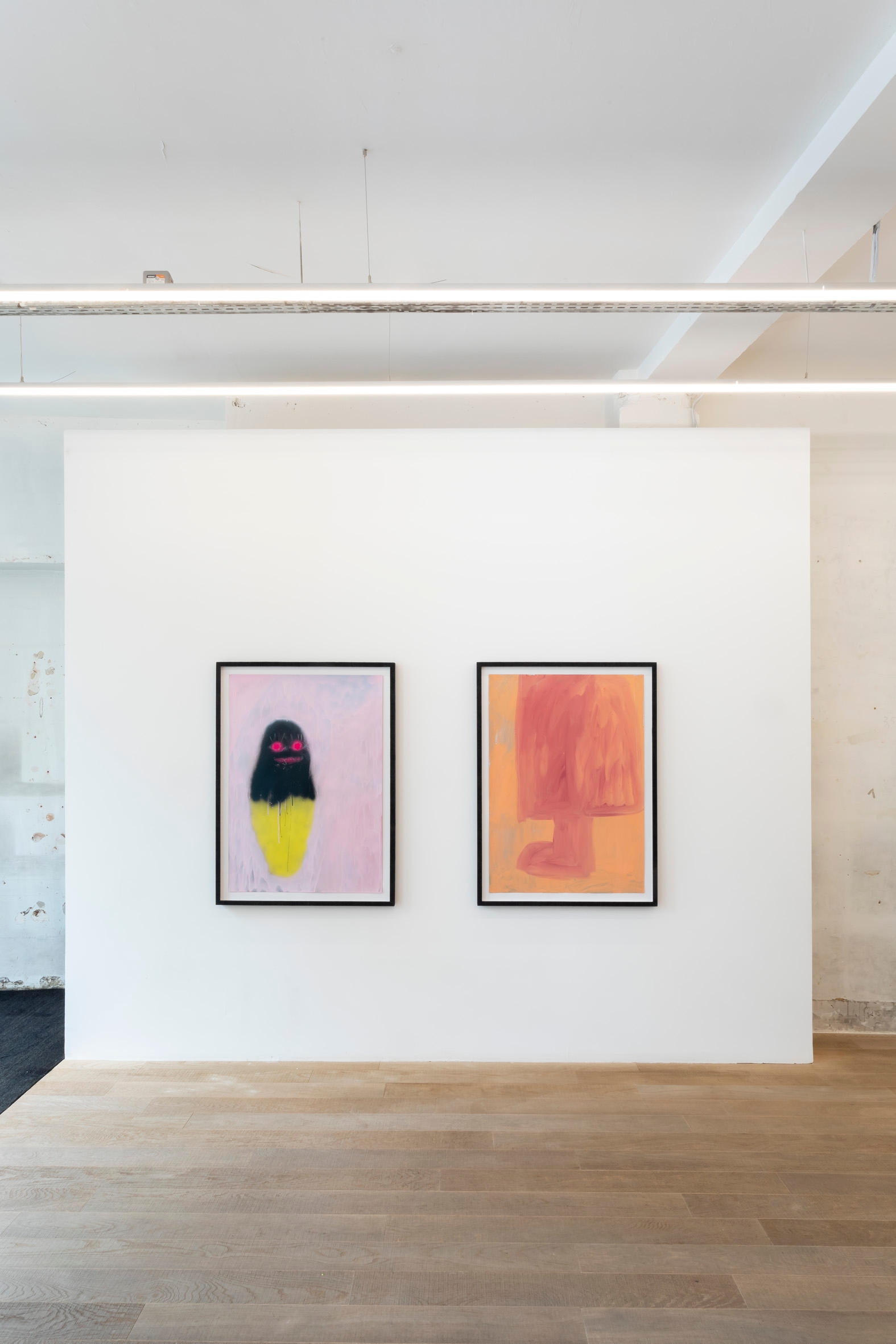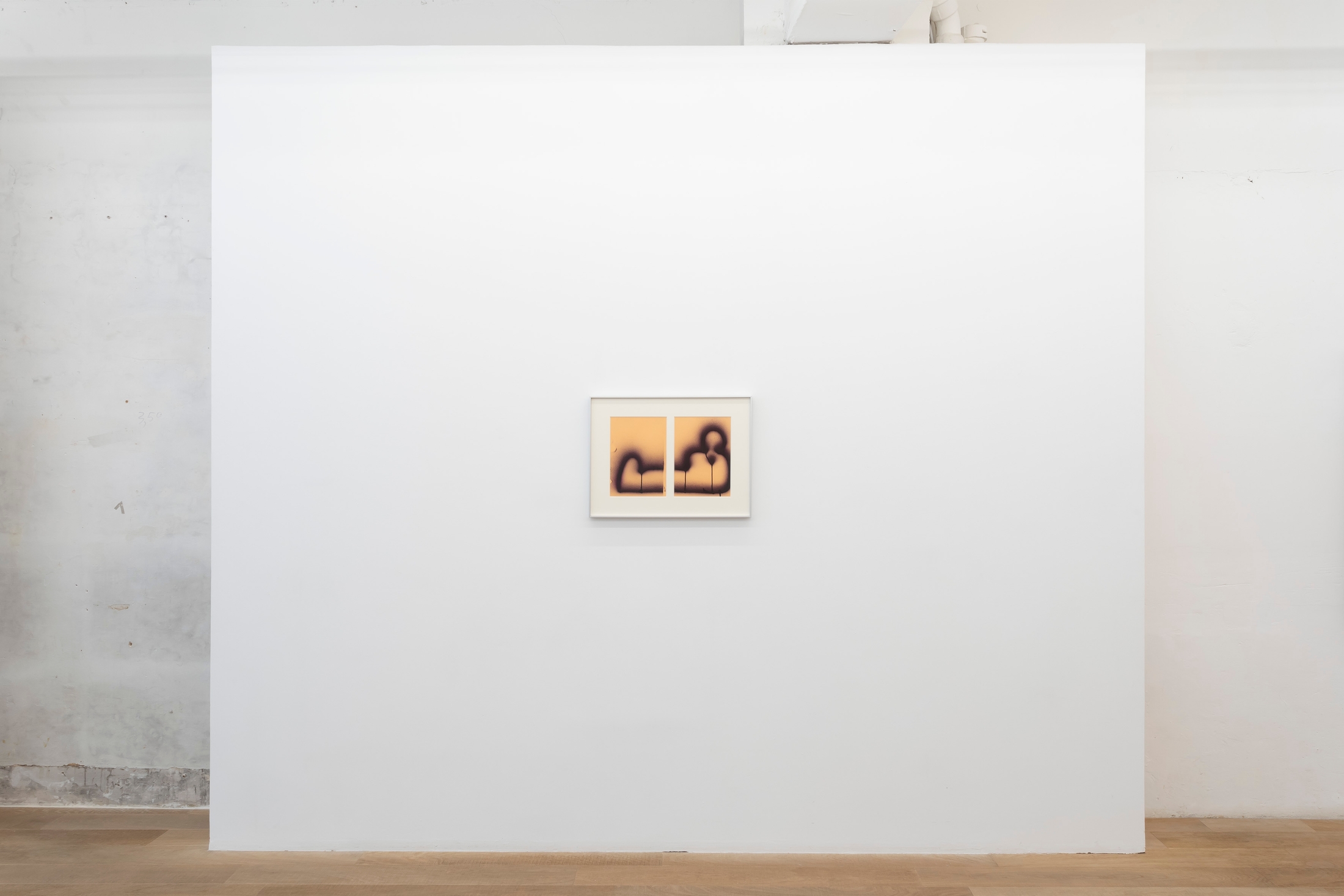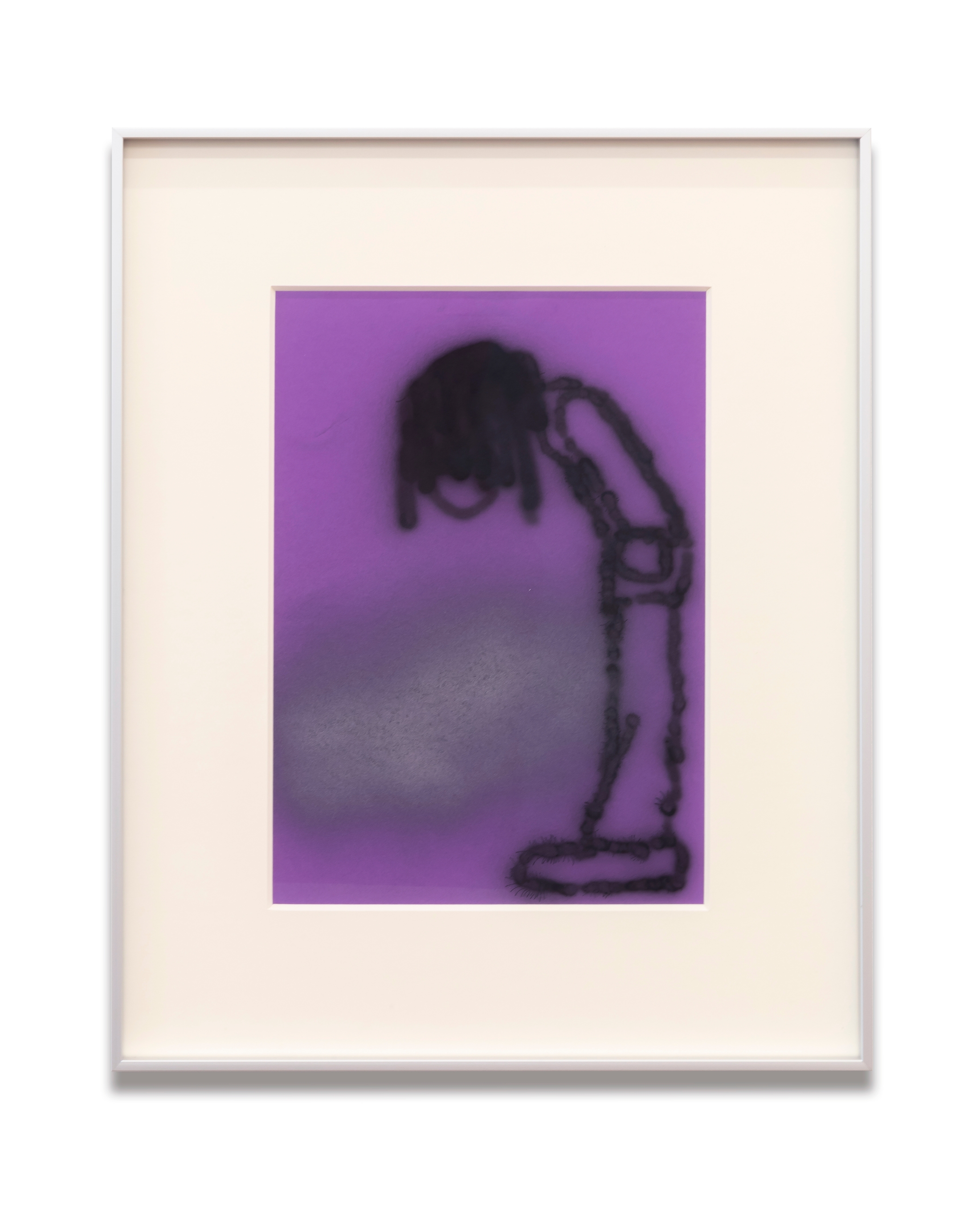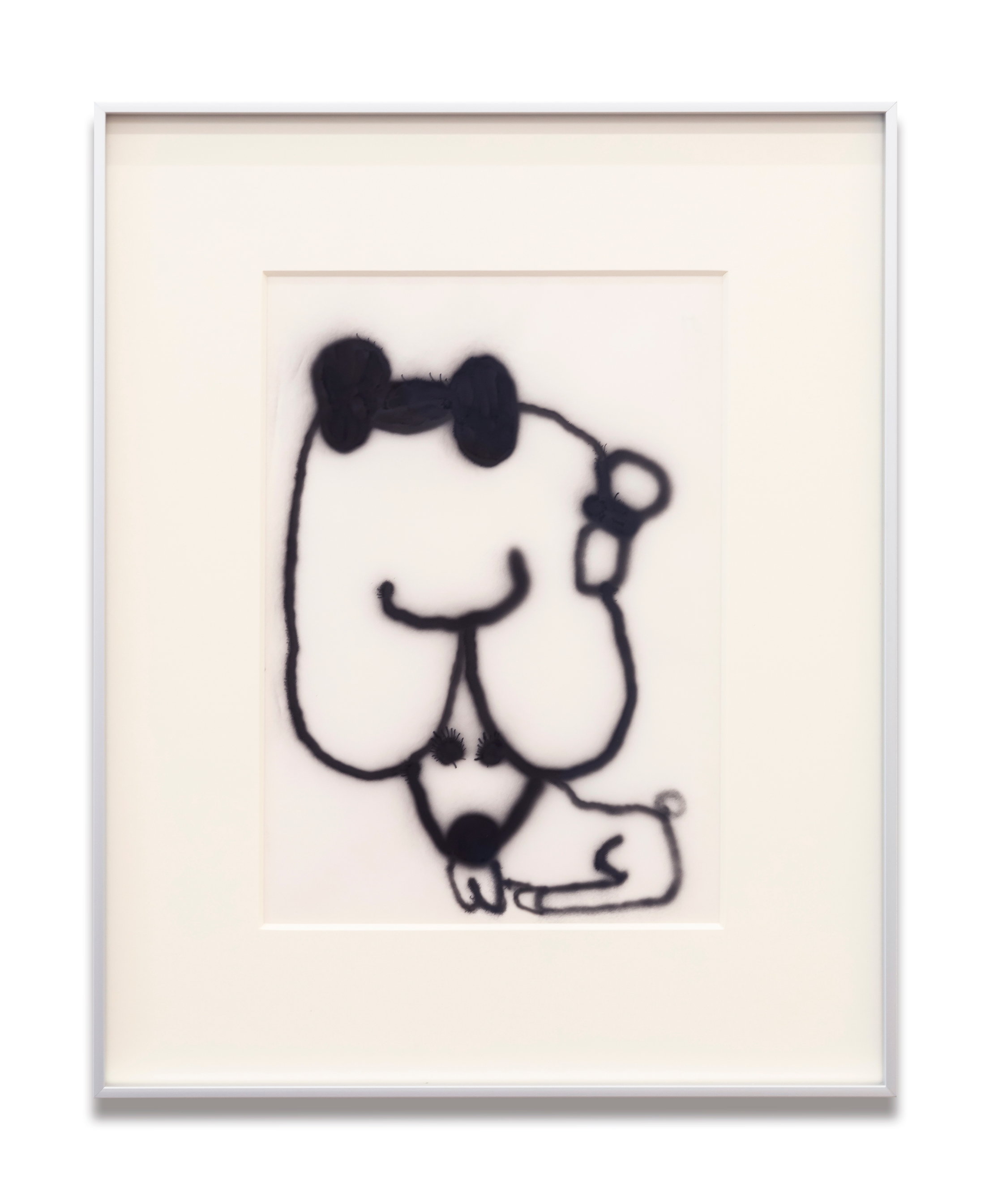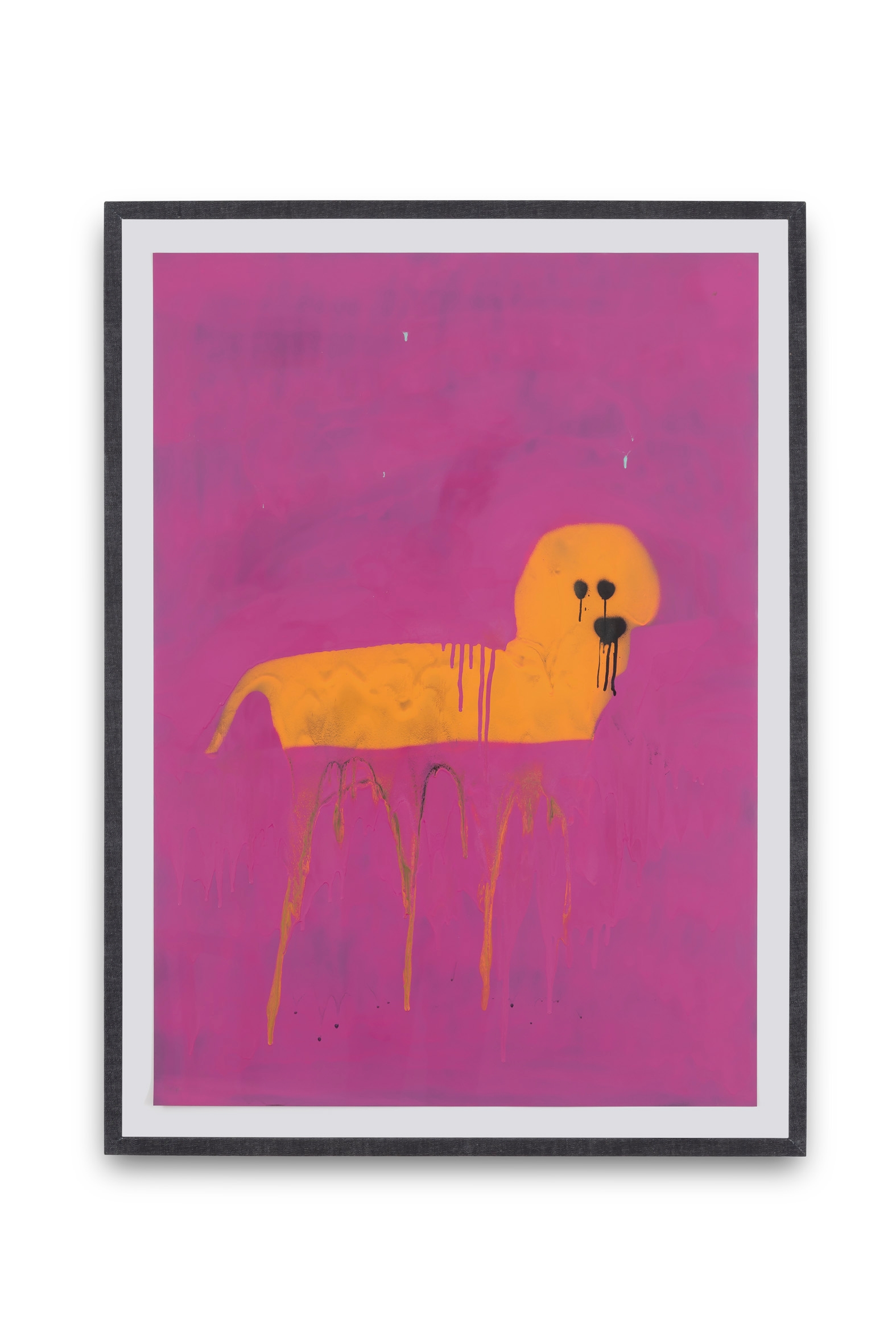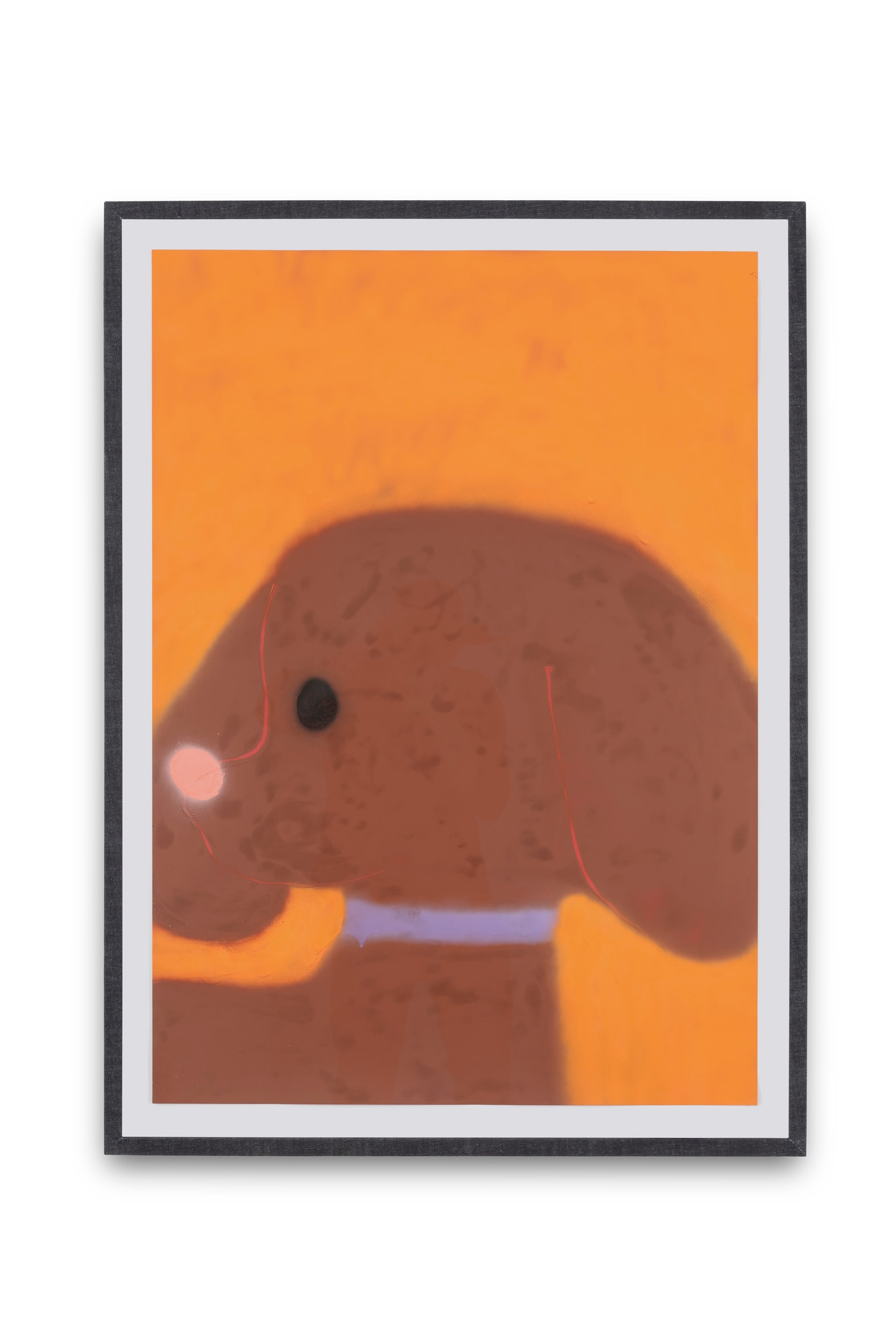To a Passerby*
Recently, I was reading a text by Amy Sillman – an American painter – about Philip Guston1– another American painter – and I noted the following sentence: “I mean, what else is life made of? You plod to work, eat a sandwich, think about death, call a friend, feel dread, walk the dog, notice some stuff, get an idea, take out the trash, then go back to the painting wall. (And that’s if you’re lucky)”. I wrote it down while thinking of Adrien’s paintings (who, by the way, liked Philip Guston very much), because they seem to be made of that exact life. They are existential but not grandiloquent, imbued with everyday life various moods, tragicomic and oriented towards what I would call the “passersby” – people you come across in the street and, more generally, those who are aware of their finitude. Adrien Fregosi’s passersby are of many types : some are facing us, some are in profile, some have legs, some don’t. Same for feet (when they have some, they are generally exaggeratedly round, as in comic strips). Some of them are dogs. Some of them smile, but they don’t always have mouths. Personally, the first thing I noticed was their eyes. Most of the time: two pschitts for the facing portraits, just one for those in profile. And gravity, which makes them cry.
I call them even more willingly “passersby” as Adrien Fregosi’s color, dripping and drawing work first flourished in the streets. In Grenoble, during the 2000s, he made graffitis under the pseudonym PUZL and stood for, in particular with the independent space Going Blind, an alternative scene inspired by American counterculture (from cartoons, to skateboard and zines). Things began to change in 2013, after moving to Sète (where graffiti was more severely reprimanded) and being diagnosed with cancer. His practice moved to the studio while he kept the habits developed in the street: spray cans to apply paint, the “make do” with what is available (he would collect materials and tools about to be thrown away) and improvisation (driven not by graffiti’s timing but by the energy available at that moment). In the studio, he also seems to have reappropriated the gestures of covering and erasing, that are to be expected on any drawing appearing on the street. The 102 x 72 cm paper sheets in the exhibition are thus disappearing under several layers of spray paint, sometimes supplemented with acrylic paint. In some areas, a drawing scratched on the surface reveals the sedimentation of colors. As airy techniques, airbrush – that Adrien Fregosi used for small drawings – and spray paint inevitably transform the drawing lines. One part gets lost in the atmosphere while the other gets fixed on paper. The characters thus become evanescent, a halo sometimes surrounds them; which doesn’t prevent them from dripping. The shapes exist in between a liquid and a gaseous state, they rise and fall as they empty. It is like looking at a cloud: the closer you get, the more the outlines disappear.
The repetition of certain motifs, sometimes almost identically – for example, this double portrait of dogs in profile, with contrasting nose and collar – shows a perseverance that seek neither virtuosity nor perfectibility, but rather a sincerity that can surely be related to a punk ethos. “Can one be punk when one likes to work diligently in the studio?2”– is another question Amy Sillman could have asked Adrien Fregosi. Looking at his acid-toned paintings made from scraps, his clumsy characters with their feet too big, their arms too long, his poodles too well groomed, I think he combined in the studio both ridicule and repeated effort, clumsiness and care.
On one of the paintings on paper from 2023, two figures with neither arms nor feet – one is blue, the other is red – float on a turquoise background. Their eyes are two pink dots staring at us. This time, they’re not dripping. When I saw them, I immediately thought of those big shadows with their red pupils that haunt Apichatpong Weerasethakul’s film Uncle Boonmee, Who Can Recall His Past Lives. In the film, Boonmee, suffering from an incurable disease, is visited by his deceased loved ones and dreams of his previous incarnations.
One might think of the Thai director’s experimental cinema as very different from Adrien Fregosi’s cartoonlike universe but, in my opinion, they both converse with ghosts. In Uncle Boonmee, as in Adrien Fregosi’s paintings, specters haunt people rather than places, they are vehicles for traveling through the strata of time and various bodies. In the painting series from 2023, characters often come in pairs, entwined or side by side, couples of shadows or mirroring figures. These pairs allow us to see Adrien Fregosi’s production through the prism of dédoublement [as a cell mitosis for the self, both splitting in two and duplicating], as if a spirit could take several forms, inhabit different beings, whether from flesh or spectral, humans or dogs. This reading is obviously influenced by the illness that affected Adrien’s daily life, and, as I imagine, also impacted his relationship to death. In his paintings, there is a certain detachment that makes visible the relationship (loose and intimate) between body and soul, the weight (real and absurd) of incarnation and the capacity (ironically aerial!) for images to draw momentary states, to “pass” them on. Not to dispel them but rather to make them come out, to take them for a walk among the passersby… as you would do with a dog. It may sound prosaic but after all, what else is life made of?
Elsa Vettier
Translation: Julia Metropolit
March 2025
*The exhibition is titled after Elsa Vettier’s text
1.« Philip Guston : From Garbage Cans to God » originally published in the monograph Philip Guston Now, Ed. H. Cooper, M. Godfrey, A. de Lima Greene & K. Nesin, Washington, D.C.: National Gallery of Art, 2020).
2. In the text « Shit Happens » published in Frieze No.22 (Dec 2015-Feb 2016), she writes “Punk seems as close as one can get to describe it, but what could be less punk than staying up late in a studio trying to make a ‘better’ oil painting?”.
À un passant*
Récemment, je relisais le texte d’Amy Sillman – peintre américaine – au sujet de Philip Guston1– autre peintre américain – et j’ai noté la phrase suivante : « Après tout, de quoi la vie est-elle faite ? On se traîne pour aller au travail, on mange un sandwich, on pense à la mort, on appelle un·e ami·e, on angoisse, on sort le chien, on remarque des trucs, on a une idée, on sort les poubelles, et on retourne devant son chevalet (et ça, c’est quand on a de la chance). » Je l’ai notée en pensant aux peintures d’Adrien (qui, au passage, aimait beaucoup Philip Guston) car elles semblent faites de cette vie-là. Existentielles sans être grandiloquentes, imbibées des états d’âme du quotidien, tragi-comiques et tournées vers ce que j’appelerais « les passant·es » – les personnes que l’on croise sur le trottoir, et plus généralement celles qui ont conscience de leur finitude. Les passant·es d’Adrien Fregosi sont de plusieurs types : il y en a de face ou de profil, avec ou sans pattes, avec ou sans pieds (lorsqu’il y en a, ils sont généralement exagérément rebondis comme dans les bandes-dessinées). Certain·es sont des chiens. Certain·es sourient, mais iels n’ont pas toujours de bouche. Personnellement, la première chose que j’ai remarqué, ce sont leurs yeux. Le plus souvent : deux pschitt d’aérosol pour les portraits de face, un seul pschitt pour ceux de profil. Et la gravité qui les fait pleurer.
Je parle d’autant plus volontiers de « passant·es » que le travail de la coul(e)ur(e) et du dessin d’Adrien Fregosi s’est d’abord épanoui dans la rue. À Grenoble, courant des années 2000, il graffait sous l’alias PUZL et défendait, avec l’espace indépendant Going Blind notamment, une scène alternative nourrie par la contre-culture américaine (des cartoons en passant par les zines et le skateboard). Les choses ont commencé à changer à partir de 2013, date à laquelle il s’est installé à Sète (où le graff était plus durement réprimandé) et où il est tombé malade. Sa pratique s’est alors déplacée vers l’atelier, conservant des habitudes développées dans la rue : la bombe aérosol pour projeter la peinture, le « faire avec » l’existant (il récupérait des supports et des outils sur le point d’être jetés) et l’improvisation (impulsée non plus par le timing du graff mais par l’énergie disponible sur le moment). À l’atelier, il semble aussi s’être réapproprié les gestes de recouvrement et d’effacement, qui, dans la rue, guettent inévitablement toute forme de dessin dès son apparition. Les feuilles de format 102 x 72 cm présentées dans l’exposition sont ainsi lavées de plusieurs couches de peinture sprayée, parfois complétées par de l’acrylique. À certains endroits, un dessin gratté dans le frais dévoile la sédimentation des couleurs. La dimension aérienne de l’aérographe – dont Adrien Fregosi se servait pour certains dessins sur petit format – et de l’aérosol transforme nécessairement la qualité du tracé. Une partie se perd dans l’atmosphère tandis que l’autre se fixe sur le papier. Elle donne aux figures cette dimension évanescente, les auréoles parfois un halo ; ce qui ne les empêche pas de dégouliner par ailleurs. Les formes existent entre l’état liquide et gazeux, s’élèvent en même temps qu’elles se vident. C’est comme regarder un nuage : plus vous vous en approchez, plus ses contours vous échappent.
La reprise de certains motifs, déclinés parfois quasiment à l’identique – par exemple ce double portrait de chiens de profil, truffe et collier contrastés – témoigne d’une obstination qui ne recherche pas la virtuosité ou la perfectibilité mais plutôt une forme de sincérité qui n’est sûrement pas éloignée d’un ethos punk. « Peut-on être punk quand on aime travailler avec application dans son atelier ?2»- voici une autre question qu’Amy Sillman aurait pu poser à Adrien Fregosi. En regardant ses peintures aux tons acides faites avec des rebuts, ses personnages patauds aux pieds trop gros, aux bras trop longs, ses caniches trop bien coiffés, je crois qu’il faisait précisément coexister à l’atelier la dérision et l’effort répété, la gaucherie et le soin.
Sur une des peintures sur papier de 2023, deux figures sans bras ni pieds – l’une bleue, l’autre rouge – surnagent sur un fond turquoise. Deux points roses leur servent d’yeux, braqués sur nous. Cette fois, ils ne coulent pas. En les voyant, j’ai tout de suite pensé à ces grandes ombres aux pupilles rouges qui hantent le film d’Apichatpong Weerasethakul, Oncle Boonmee, celui qui se souvient de ses vies antérieures. Dans le film, le personnage de Boonmee, atteint d’une maladie incurable, est visité par ses proches défunt·es et rêve à ses précédentes incarnations. On pourrait penser que le cinéma expérimental du réalisateur thaïlandais est très éloigné de l’univers cartoonesque de Fregosi, mais ils ont, selon moi, pour point commun de converser avec les fantômes. Dans Oncle Boonmee comme dans les peintures d’Adrien Fregosi, les spectres s’attachent à des figures plutôt qu’à des lieux, ils sont des véhicules pour voyager dans les strates du temps et à travers différentes enveloppes. Aussi dans la série d’œuvres réalisées en 2023, les personnages vont souvent par deux, enserrés ou côte à côte, couples d’ombres ou figures en miroir. Ces paires amènent à regarder l’ensemble de la production d’Adrien Fregosi par le prisme du dédoublement, comme si un même esprit s’incarnait dans plusieurs formes, se logeait dans différents êtres, de chair ou de spectre, humains ou chiens. Cette lecture est évidemment influencée par la maladie qui affectait Adrien dans son quotidien, son travail et, je l’imagine, son rapport à la mort. Il y a dans ses peintures, un décollement qui rend visible les liens (lâches et intimes) qu’entretiennent l’âme et le corps, le poids (réel et absurde) de l’incarnation et la capacité (aérienne, par esprit de contradiction !) des images à dessiner des états momentanés, à les faire « passer ». Pas pour les dissiper mais plutôt pour les faire sortir, les balader parmi les passant·es… un peu comme on promène un chien. Cela peut paraître prosaïque mais après tout, de quoi d’autre la vie est-elle faite ?
Elsa Vettier
mars 2025
*Le texte d’Elsa Vettier donne son titre à l’exposition
1. « Philip Guston : des poubelles jusqu’à Dieu » dans Amy Sillman. Faux Pas édité et traduit par Charlotte Houette, François Lancien-Guilberteau et Benjamin Thorel, publié par After8books, Paris, 2022.
2. Dans un texte intitulé « C’est la merde » issu du même recueil publié par After8books (voir ci-dessus), elle écrit « je ne suis pas sûre que ce soit très punk de rester debout, tard dans la nuit dans un atelier, à s’acharner à rendre « meilleure » une peinture […]. »

